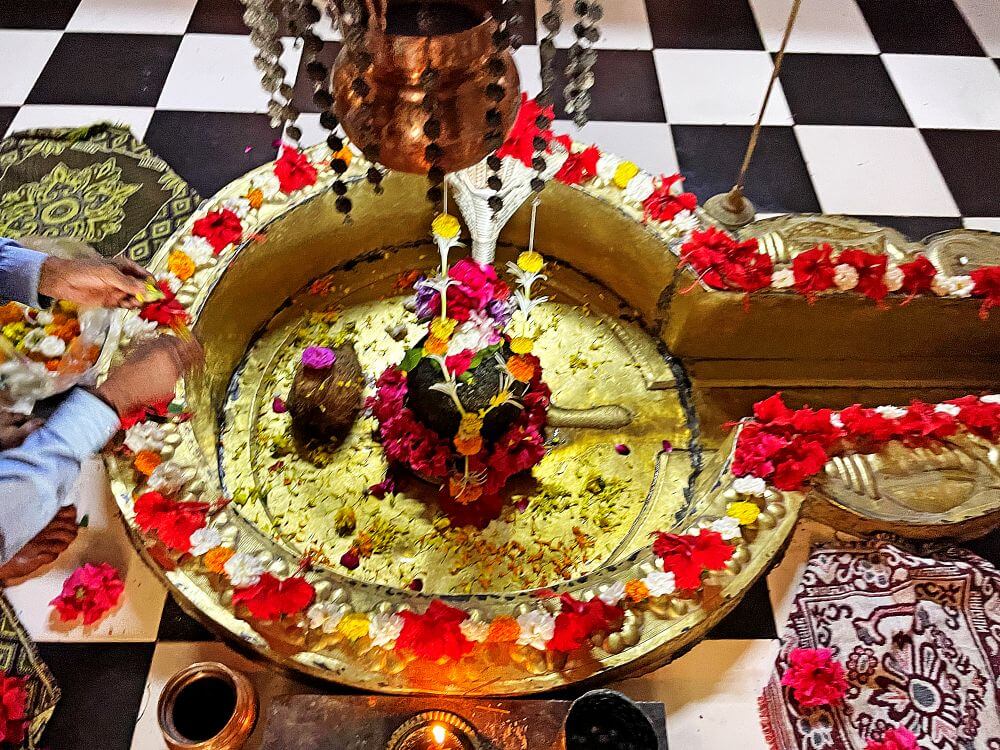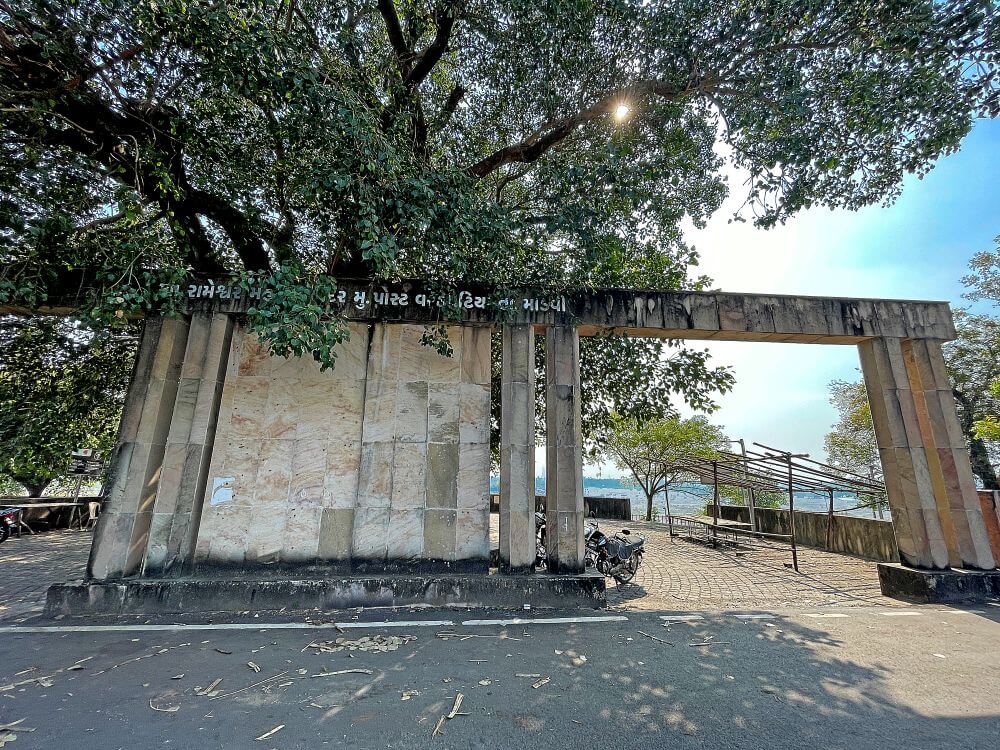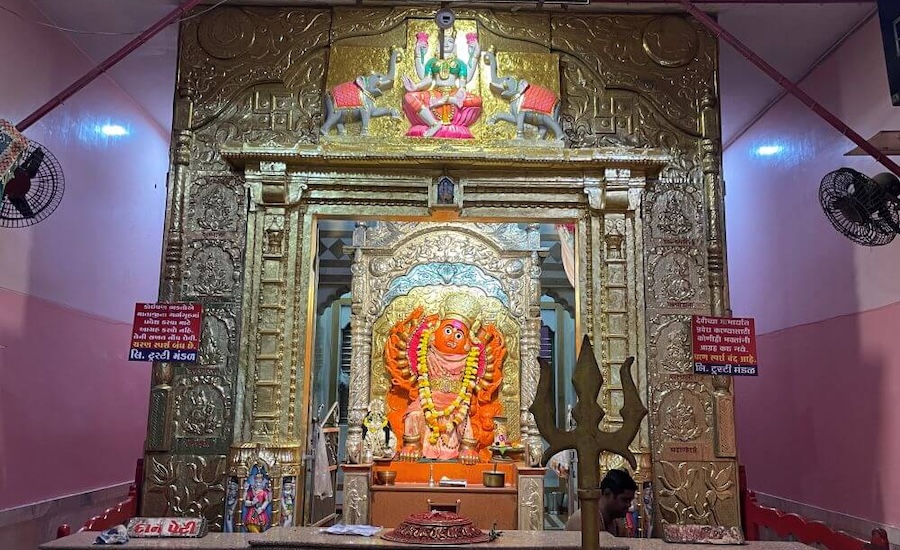
Located on the banks of the Tapti River, also known as the daughter of the Sun, the Rameshwar Mahadev Temple in Vareth Patiya village, Surat district, Gujarat, is believed to have been established by Lord Ram himself, who consecrated the Shivalinga here. As mentioned in the Tapi Mahapuran, devotees strongly believe that the Shivalinga in this temple is awakened (jagrut) and thus many visit to offer prayers to Lord Mahadev, especially during the month of Shravan, when the temple sees a large number of devotees.
According to legend, during his exile, Lord Ram visited the Mandvi region along with Lakshman and Seeta. While here, he bathed in the Tapti River and used his bow and arrow to  create the Ram Sarovar (a holy pond), from which the waters of the Tapti began to flow. After this, he consecrated a Shivalinga with his own hands and performed worship, giving the temple its name – Rameshwar Mahadev. Another mythological tale states that Lord Shiv appeared before King Bhagirath during his penance and advised him to meditate at a place like Rameshwar, established by Lord Ram himself. It is believed that taking a dip in the Tapti River near this temple after the Sun enters the zodiac sign of Capricorn (Makar Sankranti) leads to the salvation of 21 generations.
create the Ram Sarovar (a holy pond), from which the waters of the Tapti began to flow. After this, he consecrated a Shivalinga with his own hands and performed worship, giving the temple its name – Rameshwar Mahadev. Another mythological tale states that Lord Shiv appeared before King Bhagirath during his penance and advised him to meditate at a place like Rameshwar, established by Lord Ram himself. It is believed that taking a dip in the Tapti River near this temple after the Sun enters the zodiac sign of Capricorn (Makar Sankranti) leads to the salvation of 21 generations.
Earlier, the temple was a small structure and it suffered significant damage during the 2006 floods of the Tapti River. The temple is now under the management of the Gujarat Tourism Department and after its renovation in 2019, it has attained its present grand form.
The temple is located in the fertile agricultural village of Vareth Patiya, near the Kakrapar Dam, right on the banks of the Tapti River. A large arched entrance near the parking area leads devotees to the temple via a set of steps. The temple courtyard is paved with stone and is quite spacious. There are cement benches for devotees to sit and iron railings are installed along the riverbank for safety.
As you descend the steps and move forward, directly ahead, under an ancient tree, there is a small rectangular Shiv temple built on a raised platform. The temple features a small stepped shikhara (spire). Inside, there is a large idol of Lord Shankar in a meditative posture. A short distance from  here stands the ancient Rameshwar Mahadev Temple.
here stands the ancient Rameshwar Mahadev Temple.
A large sheet metal shed has been erected along the path to the temple. The temple structure includes a sabhamandap (assembly hall) and a garbhagriha (sanctum sanctorum). The saffron-painted temple has two dome-shaped spires – one over the sabhamandap and one over the sanctum. The sabhamandap features three arched entrances on three sides. At the center of the sabhamandap, on a tall marble platform, sits Nandi, the sacred mount of Lord Shiv. Below Nandi is an idol of a tortoise. On the left wall of the sabhamandap, there is a marble idol of Lord Ganesha placed in a shrine, while on the right wall, a rough-hewn stone idol of Lord Hanuman is enshrined.
Above the beautifully carved stone doorway of the sanctum (garbhagriha), there is a depiction of Lord Ram performing worship of the Shivalinga. At the center of the sanctum, there is a large Shivling. The Shivling rests in a brass-plated base (shalunka), which features intricate carvings of auspicious symbols like conch shells and flowers. In the recessed section of the base, a stone Shivling is installed. Over the Shivling, a silver Naga (serpent) is poised, forming a protective canopy. Above it, a brass vessel is suspended to perform abhishek (ritual pouring of water or milk). Around the upper canopy, rudraksha garlands are gracefully hung.  To the right of the Shivling, there stands a large trident (Trishul), a symbolic weapon of Lord Shiv.
To the right of the Shivling, there stands a large trident (Trishul), a symbolic weapon of Lord Shiv.
A large stone ghat (stairway) has been constructed within the temple premises to provide access to the riverbed. On the opposite bank of the river stands the Someshwar Temple. From the temple complex, one can also get a view of the Kakrapar Dam.
Many devotees visit this place to have darshan of the awakened (jagrut) Shivalinga. Sundays and public holidays see significant crowds. During Shravan, the sacred month in the Hindu calendar, hundreds of devotees come for darshan. On every Monday of this holy month, the area transforms into a fair-like atmosphere due to the large influx of devotees. Many carry kanwars (sacred water carriers) and perform rituals at the temple. Numerous religious programs are also organized during this month.



